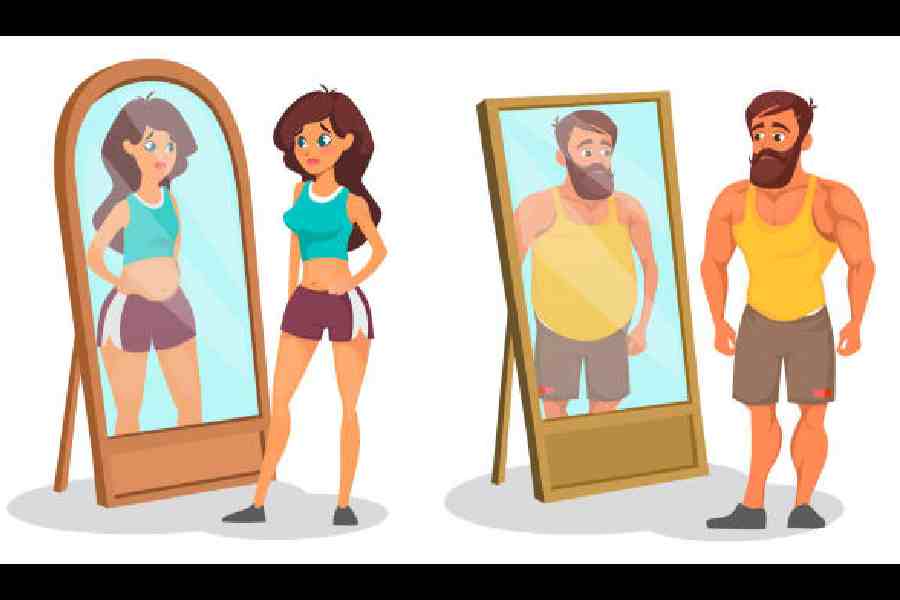Hourglass figures, girls fainting in the gym, underweight girls, undernourished girls, girls who are overexercising… we see a population who spends the whole day sipping only green tea or flavoured water.
“Ma’am what will you have for lunch?”
“I am on intermittent fasting. So I will only eat at 1pm.”
“I will have some green exotic veggies with tofu for lunch.”
“I am on detox.”
We hear these replies day in and day out. How good or logical are these fad diet trends?
The other day a young girl fainted in the gym while exercising. We checked her blood pressure, which was very low because she was fasting the day before. On top of that, she came on an empty stomach to the gym in the morning. Boys overexercise in order to build their body. Gym deaths are becoming common while exercising. Why?
Either it is overexercising or exercising on an empty stomach or not checking their physical fitness periodically. Our body goes into a shock while we don’t realise the harm we are causing it. The body will not tell you immediately, though it may give us signals which we ignore. But one day when the stored fats, muscles, etc., are consumed or damaged, then we are shaken in a bad way. Then it might be too late, or if you are lucky, you get a second chance to repair.
Have you ever thought about what these behaviours are? Exactly what are these trends? These are ‘eating disorder not otherwise specified’, or EDNOS. It does not not fall into the exact category of anorexia, but it is anorexia not otherwise specified which goes unnoticed and is dangerous. It is the most common disorder and we fail to recognise it. It’s good to eat healthy or to be living a healthy life, but only to an extent.
Understanding EDNOS
Eating Disorder Not Otherwise Specified (EDNOS) may not have the same level of recognition as anorexia nervosa, bulimia nervosa, or binge eating disorder, but it stands as the most common eating disorder diagnosis, encompassing 32 per cent to 53 per cent of individuals with eating disorders. This inclusive category was designed to address those who didn’t meet the full criteria for anorexia nervosa or bulimia nervosa but still grappled with significant eating disorders.
Symptoms: Behavioral symptoms of EDNOS involve a fixation on weight, food, calories, fat grams, dieting, and exercise. These can manifest in various ways (see Symptoms of EDNOS).
Treatment: Regardless of specific symptoms, seeking professional help for distress related to eating, exercise, body shape, and weight is crucial. Early intervention significantly impacts EDNOS recovery. Treatment recommendations are typically tailored to the eating disorder most closely resembling symptoms. For instance, if lower frequency bulimia symptoms predominate, the treatment plan aligns with therapies used for bulimia. A comprehensive treatment team should include a psychologist, psychiatrist, social worker, primary care physician, and a registered dietitian due to the mental health aspects of eating disorders.
What is Binge Eating Disorder?
Binge Eating Disorder (BED) is a behavioral condition marked by persistent, compulsive overeating. Those with BED consume substantial amounts of food in a short time frame and struggle to regulate what or how much they eat. Diagnosis typically occurs when these binge episodes happen weekly for at least three months, without subsequent purging or the use of laxatives, as seen in bulimia. The disorder causes significant distress in the individual’s life.
While BED can affect individuals with average body weight, it’s more prevalent among those with obesity, especially severe obesity. On average, the disorder first emerges around the age of 25 and is more common in younger and middle-aged individuals.
Binge Eating Disorder vs Bulimia Nervosa
Unlike individuals with bulimia nervosa, who attempt to prevent weight gain through vomiting, laxatives, fasting, or excessive exercise after binge eating, those with BED may occasionally employ such strategies but not as a regular part of their binge-eating behavior. Some individuals with BED are chronic dieters, trying to restrict calories before or after lapsing into binge eating. (See Symptoms of Binge Eating Disorder)
Mann bharo, pet bharo
Eat local and fresh food
Eat seasonal fruits and vegetables
Enjoy traditional food once in a while
Enjoy your favourite dessert too
Don’t kill your cravings for any food — moderation is the key
If you are fond of masala chai/filter coffee, go ahead and have it at least once a day
In the whole day, one meal should be of your liking — our doctor prescribed this for my mom
While travelling, enjoy the local cuisine, take care of your weight when you are back
Taste and experience all food you are fond of — don’t completely deprive yourself. Portion control is important
In winters, I eat less of rotis and eat gound ladoo/badam halwa instead during meal times
No supplements/health drink can replace fresh food. We need to take them when we have a deficiency — otherwise they are a complete no-no.
Enjoy your comfort food
Don’t overexercise, your body will give you signals
Don’t exercise on an empty stomach
Minu Budhia is a psychotherapist, counsellor, founding parent of Caring Minds, ICanFlyy, Cafe ICanFlyy, and a TEDx speaker










